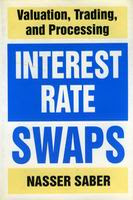Vols. 1 and 2 of Speculative Capital were published by the Financial Times in 1999. Vol. 1 came out in March and was FT’s “Book of the Month”. It got a respectable review and relatively strong sales which increased over time.
Vol. 2 followed in June and, as far the options discovery was concerned, was an instant dud. No one reacted to it.
The silence surprised me. There were large and active equity, fixed income, commodities and FX markets with tens of thousands of users and traders. Option valuation was, and remains, a mandatory subject in all business school programs. Surely the proof that options were not what everyone had thought they were
had to be newsworthy.
After a few months, the comments began to trickle in and they were uniformly critical. The 100-plus page proof, that an option is not a right to buy or sell but a right to default, somehow had failed to make its mark; even a few who praised it had not understood it. There was, furthermore, this weird reciprocity, as
I did not understand what the critics were saying. “What do you mean by right to default?”, “Where is the default?”, “Who defaults in an option?”, the readers were asking, and I thought I had answered these questions clearly and unequivocally. So the disconnect was real. It certainly went beyond careless reading of the text.
It is said that authors are always complicit in misunderstandings of their work. With that in mind, I began the work on The Enigma of Options in late 2000. I resolved to answer all the questions from the “ground up” and explain the default aspect of options to everyone’s satisfaction. The “old” Vol. 3 which I had planned as the final volume of the Speculative Capital on systemic risk had to wait.
The Enigma of Options was published in 2004. In terms of sales, it did marginally better than its predecessor, but the baffling comments about the impossibility of options being a right to default still kept coming in. One reviewer for a hedge fund newsletter said the whole theory was wrong because it was as a Marxist interpretation of option valuation. You can read an abbreviated version of it
here that was posted on the Amazon site for the Enigma.
One property of dialectics is intelligibility. The method must explain not only itself but the alternative views as well. The Enigma of Options follows the dialectical method. It shows how the standard option valuation is incorrect. It also shows
why it is incorrect and how and why the model’s authors went astray.
I wondered why a plain-for-everyone-to-see mathematical argument appears as Marxist interpretation. Then noticed that I had given the answer in the Enigma, when I wrote that “the inability to take the next logical step – at times almost willful, as if one were afraid of consequences – demands an explanation”.
Our critic reads the Enigma and realizes that it is like nothing he has read or heard before – in style, argument and most important of all, in the progression of though from one point to the next. He looks around. He is surrounded by family members, friends, neighbors, strangers, enemies, none of whom talk or write in that particular way. The critic knows as surely as night follows day that he is an all American man, living in America and surrounded by the Americans (friends, family members, strangers, enemies). So if what he is reading is like nothing he has ever read or heard, it follows that the text must have come from some Other. What could the Other be? Islamic/terrorist is one possibility, but those folks do not write about options. The only other Other are Marxists, as our critic vaguely “knows” that Marx had something to do with economics – in the same vain that he knows Jesus was a good man. So he concludes accordingly.
That is the reason behind Palin and McCain’s reference to “real America” and “real Americans”. Prior to the publication of Speculative Capital, I, too, would have dismissed them as demagogues and hate mongers. But what they say is what they genuinely believe. They and their supporters listen to Obama and his supporters and immediately know that that is not how their families, friends and enemies talk. They know
they are real, true, Americans. That makes anyone not speaking the same way not American – pardon the double negative, but you know what I mean. In all events, the feelings and beliefs are genuine.
But what about a character like Greenspan? How is it that he is “accepted” despite big words and a seemingly impenetrable argot?
The answer is that listeners know what he says is drivel. They like to hear big words from his mouth, a weakness that Mencken noticed more than seventy years ago. But they like them precisely because they know that the words are harmless.
The problem with the The Enigma of Options is that when our critic reads it, he
can follow it. More, he
understands it. And therein lies the question, the dilemma: how and whether to accept something logical even thought it negates our beliefs, our standing, our achievements? That dialectical question is the very essence of ethics and morality.





